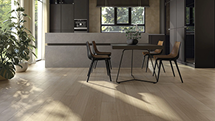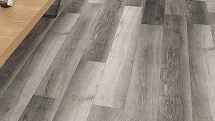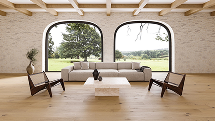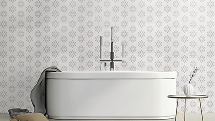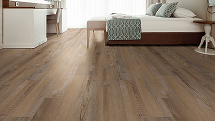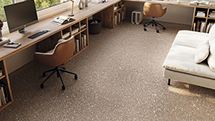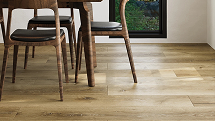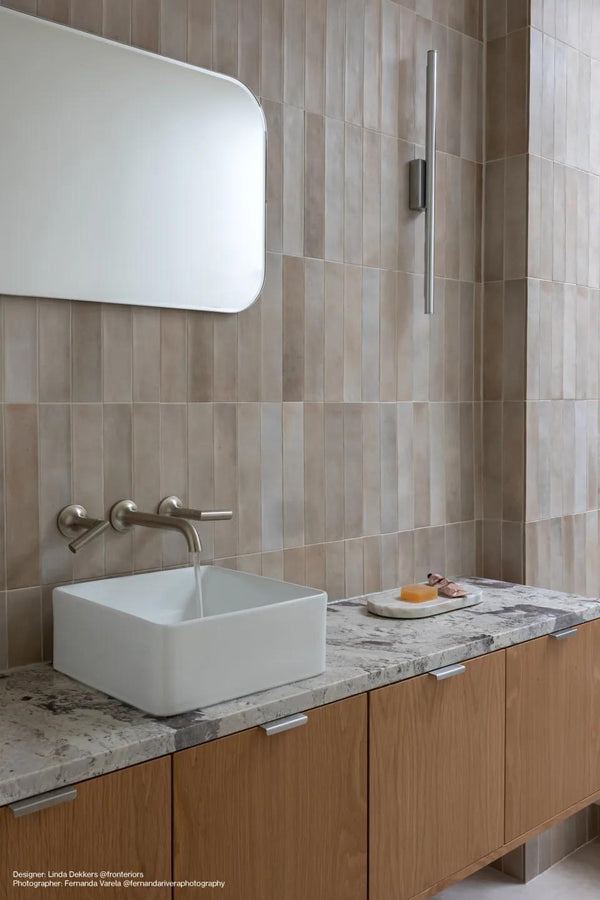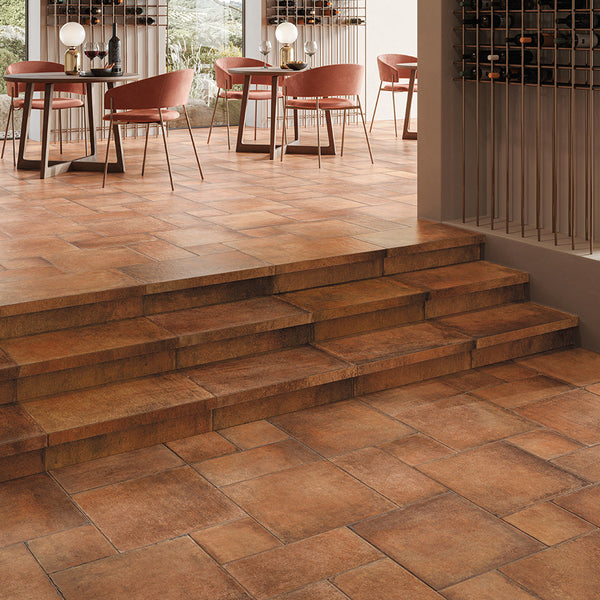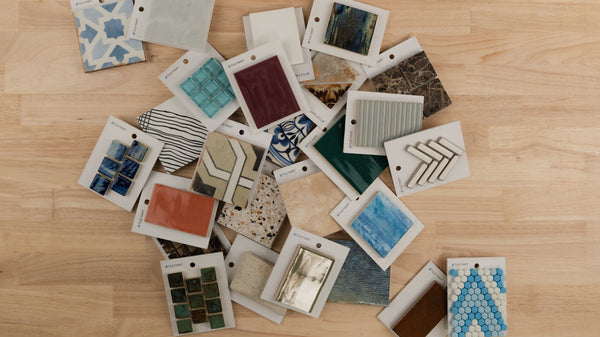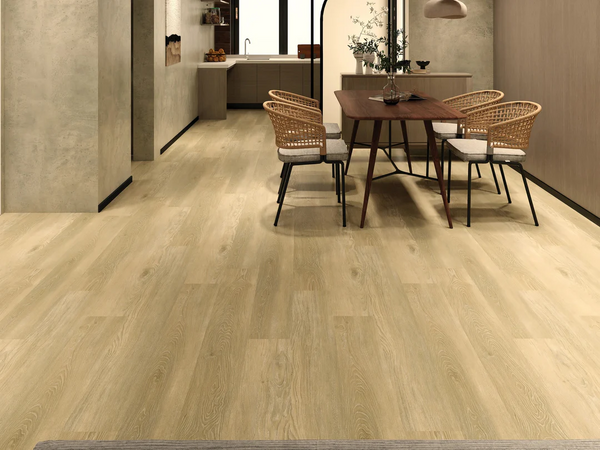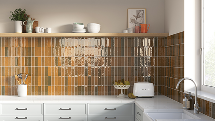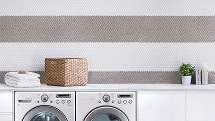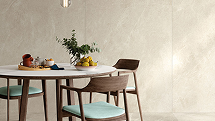Is tile flooring a better choice than hardwood flooring?
Key Highlights
- Hardwood flooring and tile flooring are popular choices for home renovations, each with its own pros and cons.
- Tile floors come in a variety of materials, shapes, and styles, offering design flexibility and easy maintenance.
- When considering the cost analysis, hardwood floors can be more expensive upfront, but they have a longer lifespan. Tile floors have a lower initial cost but may require more frequent repairs and replacements.
- The choice between hardwood and tile flooring depends on factors such as personal preference, lifestyle, and the specific needs of the space being renovated.
Introduction
Installing a new floor is a major decision that can completely transform the look and feel of your home. Two popular choices for flooring are hardwood and tile. Both options offer various benefits and considerations, making it important to weigh the pros and cons before deciding which one is best for your home renovation.
Hardwood flooring is known for its durability and timeless aesthetic appeal. With its natural beauty and warmth, hardwood floors can enhance the overall aesthetic of any space. They also have the potential to increase the resale value of a home. On the other hand, tile flooring offers design flexibility and easy maintenance. Available in a variety of materials, shapes, and styles, tiles can be customized to complement any design aesthetic.
When comparing the two options, it’s important to consider factors such as the cost, durability, aesthetic appeal, installation process, and environmental impact. Each type of flooring has its own advantages and disadvantages, and the best choice for your home renovation depends on your personal preferences, lifestyle, and the specific needs of the space being renovated.
Understanding Tile and Hardwood Floors
To make an informed decision about whether hardwood or tile flooring is right for your home renovation, it’s important to understand the basics of each type of flooring.
Hardwood floors are typically made of solid wood or engineered wood. Solid hardwood is made from a single piece of wood, while engineered wood is composed of multiple layers of wood veneers. Tile floors, on the other hand, are made of various materials such as ceramic, porcelain, or natural stone. Tiles come in a variety of shapes, sizes, and styles, allowing homeowners to choose the perfect look for their space. When comparing the two, it’s essential to consider factors such as durability, maintenance, and overall aesthetic appeal.
The Basics of Tile Flooring
Ceramic tile flooring is a popular choice for many homeowners due to its durability and versatility. It is made from clay that is fired at high temperatures to create a hard, durable surface. Ceramic tiles come in a variety of colors, patterns, and sizes, allowing for endless design possibilities.
One thing to consider with tile flooring is the presence of grout lines. Grout lines are the spaces between the tiles that are filled with a cement-based material. While grout lines can add to the overall aesthetic appeal of the floor, they can also be a challenge to clean and maintain. Regular maintenance is required to keep the grout lines clean and prevent them from becoming a breeding ground for bacteria and mold.
Another consideration with tile flooring is its susceptibility to moisture damage. While ceramic tiles are water-resistant, excessive moisture can seep through the grout lines and cause damage to the subfloor. It is important to ensure that the tile flooring is properly installed and sealed to prevent moisture from seeping in and causing long-term damage.
The Basics of Hardwood Flooring
Hardwood flooring is known for its timeless beauty and durability. There are two main types of hardwood flooring: solid hardwood and engineered wood flooring.
Solid hardwood flooring is made from a single piece of wood and offers a classic, natural look. It is typically more expensive than engineered wood flooring but can be sanded and refinished multiple times to restore its original beauty.
Engineered wood flooring is made from multiple layers of wood veneers and offers greater stability and resistance to moisture. It is a more cost-effective option than solid hardwood and is available in a variety of styles and finishes.
Wood floors offer a warm and inviting feel to any space and can enhance the overall aesthetic of a room. They are also known for their durability and can last for many years with proper care and maintenance.
Aesthetic Appeal and Design Flexibility
When it comes to aesthetic appeal and design flexibility, both hardwood and tile floors offer unique advantages.
Hardwood floors are often considered a classic choice that can complement a variety of design styles. They offer a more natural and warm look, enhancing the overall aesthetic of a space. Design consultants can help homeowners choose the best type of hardwood flooring for their specific design preferences and needs.
Tile floors, on the other hand, offer a wide range of design options. With various materials, patterns, and sizes available, homeowners can choose a tile that best fits their design vision. Tile floors can be a good choice for those looking for a more modern or contemporary look, or those who want to create a unique and personalized design.
Visual Impact of Tile Floors
Tile floors can have a significant visual impact on a space, adding character and style to any room. With a wide range of tile types available, homeowners can choose the perfect tile to match their design preferences.
Porcelain tiles, for example, are known for their durability and versatility. They come in a variety of colors, patterns, and finishes, making them a popular choice for many homeowners. Porcelain tiles can mimic the look of natural stone, such as marble or granite, without the high cost and maintenance.
Grout lines also play a role in the visual impact of tile floors. The color and width of the grout lines can affect the overall appearance of the floor. Choosing a grout color that complements the tile color can create a cohesive and visually appealing look.
Visual Impact of Hardwood Floors
Hardwood floors have a timeless beauty that can enhance the visual appeal of any space. The natural grain and texture of the wood create a warm and inviting atmosphere.
Wood flooring comes in a variety of species, each with its own unique characteristics. Oak, maple, and walnut are just a few examples of the many options available. The natural variation in color and grain patterns adds to the visual interest of the floor.
Hardwood floors can also be combined with other materials, such as natural stone or tile, to create a visually striking design. This combination of materials can add depth and texture to the overall aesthetic of the space.
Durability and Maintenance
Durability and maintenance are important factors to consider when choosing between hardwood and tile flooring.
Both hardwood and tile floors are durable and can withstand normal wear and tear. However, each material has its own specific maintenance requirements.
Hardwood floors require regular cleaning, including sweeping or vacuuming to remove dirt and debris, and occasional mopping with a hardwood floor cleaner. It is important to avoid excessive moisture, as it can cause damage to the wood.
Tile floors are also durable and easy to clean. Regular sweeping or vacuuming, followed by mopping with a mild tile cleaner, is usually sufficient to keep tile floors looking their best. It is important to clean up spills promptly to prevent stains and to periodically reseal the grout lines to maintain their appearance.
How Tile Floors Stand Up to Wear and Tear
Tile floors, particularly those made from porcelain or ceramic, are highly durable and can withstand heavy foot traffic and normal wear and tear. Tiles are resistant to scratches, dents, and stains, making them a good choice for high-traffic areas.
One potential concern with tile floors is the grout lines. Grout can become discolored or damaged over time and may require periodic maintenance or cleaning. Additionally, excessive moisture or water exposure can cause the grout to deteriorate or become moldy. Proper sealing and regular cleaning can help prevent these issues.
Porcelain and ceramic tiles are also highly resistant to moisture and do not absorb water. This makes them a good choice for areas prone to spills or moisture, such as bathrooms or kitchens. However, it is important to ensure that the tiles are properly installed and sealed to prevent moisture from seeping through the grout lines and causing damage to the subfloor.
How Hardwood Floors Handle Daily Life
Hardwood floors are known for their durability and ability to handle daily life with ease. The natural hardness of hardwood makes it resistant to dents and scratches, although it is not completely immune to them.
Over time, hardwood floors may develop small dents or scratches from regular use. These can add character to the floor and can often be repaired through sanding and refinishing.
One potential concern with hardwood floors is their susceptibility to moisture. Excessive moisture or water exposure can cause the wood to warp or buckle. It is important to promptly clean up any spills and to avoid exposing the floor to excessive moisture.
Proper care and maintenance, such as regular sweeping or vacuuming and occasional refinishing, can help keep hardwood floors looking their best and extend their lifespan.
Installation Process Compared
The installation process for hardwood and tile floors differs in terms of materials, labor, and complexity.
Tile flooring installation typically involves preparing the subfloor, laying the tiles, and grouting the spaces between them. This process can be time-consuming and requires precision to ensure a seamless and even finish. The cost of tile installation can vary depending on the type of tile, square footage, and labor involved.
Hardwood flooring installation involves preparing the subfloor, laying the planks or boards, and securing them in place. The installation process can be simpler and faster compared to tile installation. However, it is important to hire a professional installer to ensure the proper installation of hardwood floors. The cost of hardwood floor installation can vary depending on the type of wood, square footage, and labor involved.
Installing Tile Floors: What to Expect
Installing tile floors can be a complex process that requires careful planning and execution.
To begin, the subfloor must be properly prepared to ensure a smooth and level surface for the tiles. Once the subfloor is ready, the tiles are laid in the desired pattern, leaving space for grout lines. The tiles are then secured in place and grout is applied to fill the spaces between them.
During the installation process, it is important to ensure that the tiles are properly spaced and aligned for a seamless finish. Excessive water or moisture should be avoided, as it can affect the adhesive and cause the tiles to shift or become loose over time. Regular maintenance, such as sweeping and mopping, is required to keep the grout lines clean and prevent the buildup of stubborn grime.
Installing Hardwood Floors: Steps and Considerations
Installing hardwood floors involves several steps and considerations to ensure a successful and long-lasting installation.
The first step is to prepare the subfloor and ensure that it is clean, dry, and level. Next, the hardwood boards or planks are laid in the desired pattern and secured to the subfloor. The installation process can vary depending on the type of hardwood flooring being installed, such as solid wood or engineered wood.
One important consideration when installing hardwood floors is the relative humidity of the space. Wood is a natural material that can expand and contract with changes in humidity. It is important to acclimate the hardwood boards to the space before installation to minimize the risk of warping or buckling.
Another consideration is the use of new boards to ensure a consistent and uniform appearance. Mixing old and new boards may result in variations in color and grain pattern.
Cost Analysis: Tile vs. Hardwood
When considering the cost analysis of tile vs. hardwood flooring, it is important to consider both the initial costs and long-term value.
The cost of tile flooring can vary depending on factors such as the type of tile, square footage, and labor involved. Generally, tile flooring has a lower initial cost compared to hardwood flooring. However, it is important to consider the cost of maintenance and repairs over time.
Hardwood flooring, on the other hand, can have a higher initial cost compared to tile flooring. However, hardwood floors can increase the value of a home and have a longer lifespan. With proper care and maintenance, hardwood floors can last for many years, providing long-term value for homeowners.
Initial Costs and Long-Term Value of Tile Flooring
The initial cost of tile flooring can vary depending on several factors, such as the type of tile, square footage, and labor costs. Porcelain tiles and ceramic tiles are popular choices for many homeowners due to their durability and affordability.
While tile flooring has a lower initial cost compared to hardwood flooring, it is important to consider the long-term value. Tile floors are known for their durability and can last for many years with proper care and maintenance. They are resistant to scratches, stains, and moisture, making them a good choice for high-traffic areas such as kitchens and bathrooms.
Tile flooring is also a popular choice for laundry rooms, as it is easy to clean and can withstand exposure to water and detergent spills.
Initial Costs and Long-Term Value of Hardwood Flooring
Hardwood flooring generally has a higher initial cost compared to tile flooring. The cost can vary depending on factors such as the type of wood, square footage, and labor costs.
While hardwood floors may have a higher upfront cost, they can provide long-term value for homeowners. Hardwood floors are known for their durability and can last for many years with proper care and maintenance. They can also increase the resale value of a home and have a timeless appeal.
Both solid hardwood and engineered wood flooring offer long-term value. Solid hardwood is made from a single piece of wood and can be sanded and refinished multiple times to restore its original beauty. Engineered wood flooring is composed of multiple layers of wood veneers and offers greater stability and resistance to moisture. It is important to consider the specific needs of the space and personal preferences when choosing between solid hardwood and engineered wood flooring.
Environmental Impact and Sustainability
When considering the environmental impact and sustainability of flooring options, both hardwood and tile have their own considerations.
Tile flooring can be considered more environmentally friendly due to the frequent use of recyclable materials and the reduced deforestation associated with its production. Some tile options, such as porcelain or ceramic, can be made from recycled materials.
Hardwood flooring can be more sustainable if harvested from responsibly managed forests. It is important to choose hardwood flooring that is certified by organizations such as the Forest Stewardship Council (FSC), which ensures that the wood is sourced from sustainable forestry practices.
The Eco-Friendliness of Tile Flooring
Tile flooring can be considered eco-friendly due to several factors. Some tile options, such as vinyl flooring, can be made from recycled materials. This reduces the demand for new raw materials and helps minimize waste.
Natural stone tiles, such as slate or granite, are also considered eco-friendly options. These tiles are made from natural materials that are abundant and do not require extensive energy or resources for production.
Additionally, tile flooring is known for its longevity and durability. With proper care and maintenance, tile floors can last for many years, reducing the need for frequent replacements and minimizing waste.
The Eco-Friendliness of Hardwood Flooring
Hardwood flooring can be considered eco-friendly if sourced from responsibly managed forests. Sustainable forestry practices ensure that trees are harvested in a way that promotes regrowth and environmental conservation.
Refinishing hardwood floors is another eco-friendly aspect of hardwood flooring. By refinishing the existing floor instead of replacing it, homeowners can extend the lifespan of the hardwood and reduce the demand for new materials.
Choosing hardwood flooring made from sustainable wood species, such as hickory, can also contribute to the eco-friendliness of the flooring. Hickory is known for its durability and abundance, making it a sustainable choice for hardwood flooring.
Comfort and Health Considerations
Comfort and health are important considerations when choosing between hardwood and tile flooring.
Hardwood floors offer a warm and inviting feel underfoot, making them comfortable to walk on. They also provide good insulation, helping to maintain a comfortable temperature in the room.
Tile floors, on the other hand, can feel colder and harder underfoot. However, they are easy to clean and hypoallergenic, making them a good choice for those with allergies or sensitivities to dust and allergens. Tile floors can also be a hygienic option for spaces such as kitchens and bathrooms, as they are resistant to moisture and easy to clean.
Living with Tile Floors: Comfort and Hygiene
Living with tile floors can have both comfort and hygiene considerations. Tile floors can feel colder underfoot, especially in colder climates. However, the use of area rugs and heating systems can help mitigate this issue.
Cleaning tile floors is generally easy and straightforward. Regular sweeping or vacuuming, followed by mopping with a mild tile cleaner, is usually sufficient to keep them clean. Tile floors are also hypoallergenic, as they do not trap dust, pet dander, or other allergens.
In terms of hygiene, tile floors are resistant to moisture and can withstand spills and humidity. This makes them a good choice for high-moisture areas such as bathrooms and kitchens, where cleanliness and hygiene are important.
Living with Hardwood Floors: Warmth and Allergies
Living with hardwood floors offers warmth and comfort. Hardwood floors provide a natural warmth and insulation, making them comfortable to walk on even in bare feet.
Hardwood floors are also a good choice for households with young children or those who prefer to walk in stocking feet. The smooth and warm surface of hardwood floors is gentle on little feet and provides a cozy and inviting atmosphere.
In terms of allergies, hardwood floors are less likely to trap dust, pet dander, or other allergens compared to carpet or other flooring options. This can contribute to better indoor air quality and reduce the risk of triggering allergies or asthma.
Resale Value and Market Preference
The resale value and market preference for hardwood and tile flooring can vary depending on factors such as location and design trends.
Hardwood floors are often preferred by homebuyers and can increase the resale value of a home. The timeless appeal and durability of hardwood flooring make it a popular choice for many homeowners. Hardwood floors are particularly desirable in dining rooms and other common areas.
Tile floors, on the other hand, may not increase the resale value of a home as much as hardwood floors. However, they are still attractive to homebuyers due to their durability, easy maintenance, and modern look. Tile floors are often preferred in areas such as kitchens, bathrooms, and laundry rooms.
The Appeal of Tile Floors to Homebuyers
Tile floors have a strong appeal to homebuyers for several reasons. First and foremost, tile floors are known for their durability. They can withstand heavy foot traffic and are resistant to scratches, stains, and other forms of wear and tear.
Tile floors are also easy to maintain, making them an attractive option for homebuyers. Regular sweeping or vacuuming, followed by mopping with a mild cleaner, is usually sufficient to keep tile floors looking their best.
In terms of aesthetics, tile floors offer a modern and sleek look that appeals to many homebuyers. With a wide range of materials, colors, and patterns available, homeowners can choose a tile that complements their design vision.
The Appeal of Hardwood Floors to Homebuyers
Hardwood floors have a timeless appeal that appeals to many homebuyers. The natural beauty and warmth of hardwood flooring can enhance the overall aesthetic of a space and create a sense of elegance and sophistication.
Hardwood floors are often considered an ideal choice for homeowners looking to maximize their return on investment. They can increase the resale value of a home and are often seen as a desirable feature.
In terms of design, hardwood floors offer versatility and compatibility with a wide range of design styles. From traditional to modern, hardwood floors can complement any aesthetic and create a cohesive and visually appealing look.
Conclusion
In conclusion, the decision between tile and hardwood flooring for your home renovation boils down to personal preferences, lifestyle, and budget. While tile offers durability and easy maintenance, hardwood exudes warmth and timeless elegance. Consider factors such as aesthetics, maintenance, environmental impact, and resale value before making your choice. Both flooring options have their unique advantages, so pick the one that aligns best with your needs and style. Ultimately, whether you opt for the durability of tile or the classic charm of hardwood, your decision should enhance the beauty and functionality of your living space for years to come.
Frequently Asked Questions
Which Flooring Option is More Pet-Friendly?
Both hardwood and tile flooring can be pet-friendly, but each option has its considerations. Hardwood floors can be susceptible to scratches from pet claws, while tile floors can be more durable and resistant to moisture and grime.
Can Tile or Hardwood Floors Be Installed Over Radiant Heating?
Both tile and hardwood floors can be installed over radiant heating systems. However, it is important to consider the specific requirements of each type of flooring and consult with a professional to ensure compatibility. Temperature fluctuations and humidity levels should be carefully monitored to prevent damage to the flooring.


